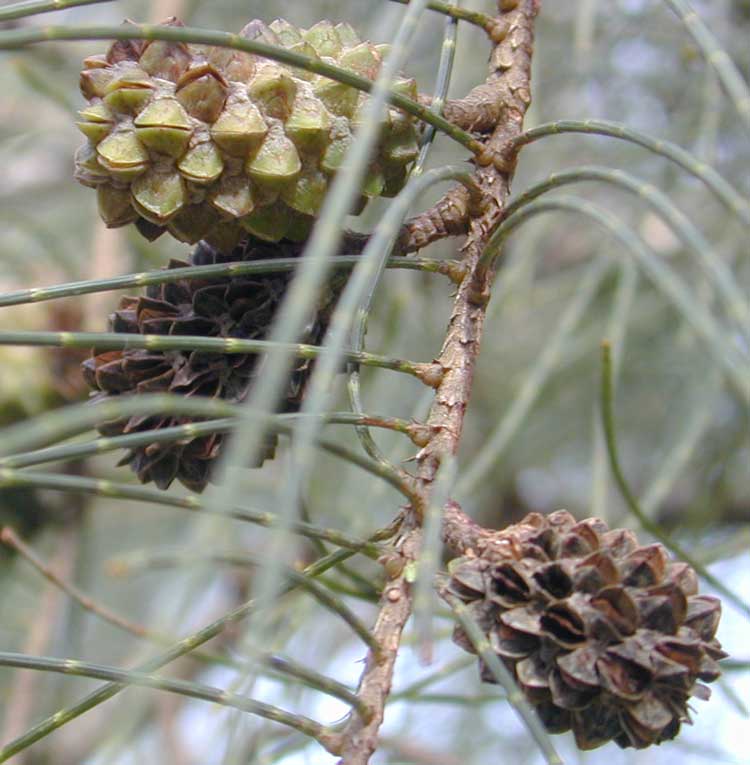Casuarina equisetifolia (*) Cladus: Eukaryota Name Casuarina equisetifolia L. Vernacular name References * Amoen. acad. 4:143. 1759 "equisefolia" (Forster & Forster f., Char. gen. pl. ed. 1:105, t. 52. 1775) Casuarina equisetifolia is a she-oak species of the genus Casuarina, native to Australasia, southeast Asia such as in Philippines locally know to them as Agoho, and islands of the western Pacific Ocean, from Burma and Vietnam east to French Polynesia, New Caledonia, and Vanuatu, and south to Australia (north of Northern Territory, north and east Queensland, and northeastern New South Wales). It is also found in West Africa[1], where it is known as the Filao Tree[2] and is planted to prevent erosion in sandy soils. It is possibly native to Madagascar.[3][4][5] These plants are an invasive species in Florida, known as Australian pines.[6][7] The specific name equisetifolia is derived from the Latin word equisetum, meaning "horse hair" (referring to the resemblance of the drooping branchlets to horse tails). The species has many common names including coastal she-oak, beach she-oak, horsetail beefwood, horsetail tree, Australian pine, ironwood, and whistling pine. It is an evergreen tree growing to 6–35 m (20–115 ft) tall. The foliage consists of slender, much-branched green to grey-green twigs 0.5–1 mm (0.020–0.039 in) diameter, bearing minute scale-leaves in whorls of 6–8. The flowers are produced in small catkin-like inflorescences; the male flowers in simple spikes 0.7–4 cm (0.28–1.6 in) long, the female flowers on short peduncles. Unlike most other species of Casuarina (which are dioecious) it is monoecious, with male and female flowers produced on the same tree. The fruit is an oval woody structure 10–24 mm (0.39–0.94 in) long and 9–13 mm (0.35–0.51 in) in diameter, superficially resembling a conifer cone made up of numerous carpels each containing a single seed with a small wing 6–8 mm (0.24–0.31 in) long.[3][8] There are two subspecies:[3][4] * Casuarina equisetifolia subsp. equisetifolia. Large tree to 35 m (115 ft) tall; twigs 0.5–0.7 mm (0.020–0.028 in) diameter, hairless. Southeast Asia, northern Australia.[9] Casuarina is widely used as a bonsai subject, particularly in Southeast Asia and parts of the Caribbean. Indonesian specimens and those cultivated in Taiwan are regarded among the best in the bonsai world. Among the islands of Hawaii, Casuarina are also grown for erosion prevention, and in general as windbreaking elements. References 1. ^ PLANT FOR THE PLANET: THE BILLION TREE CAMPAIGN, UNEP.
Source: Wikipedia, Wikispecies: All text is available under the terms of the GNU Free Documentation License |
|

